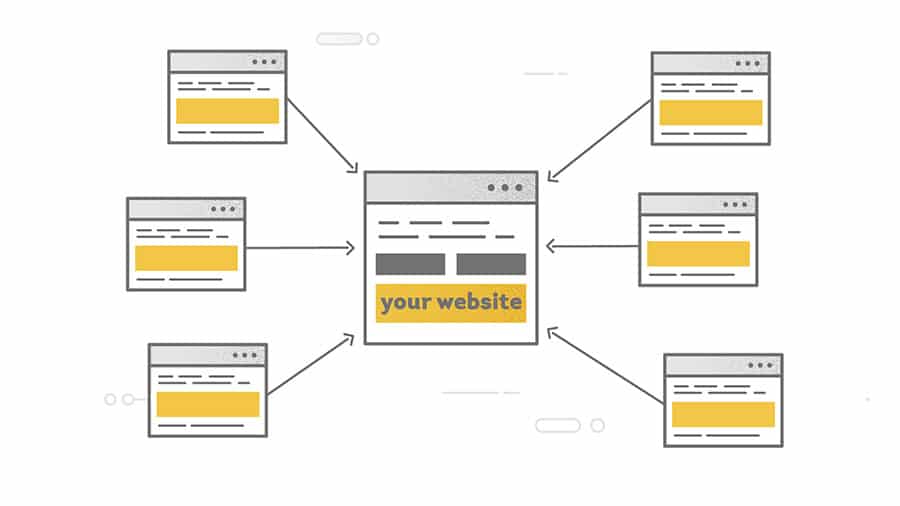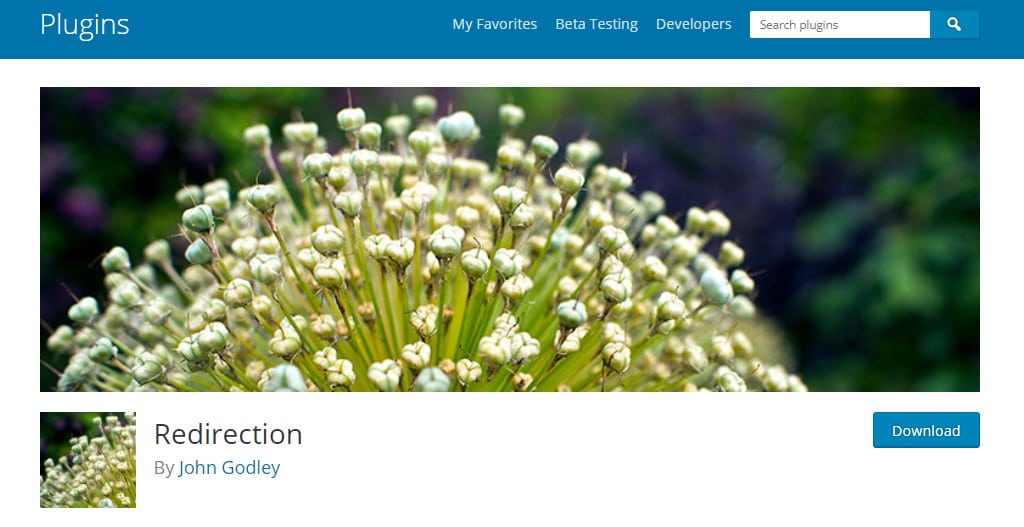Link Building Guide for Your WP Site 2018

Before delving into strategies, techniques, and tactics of link building, let’s define what it actually is.
The definition seems to be pretty simple. Link building is the process of acquiring new inbound links aka backlinks to a website from the external sites.
What do you need it for?
The primary goal of most link building campaigns is to increase the search traffic from Google, although links from popular sites, like news portals, can also be a worthy source of referral traffic.
Here you will find only proven and effective strategies. Are you ready to start?
Link Building Strategies
Ok, here comes the first, the most popular and effective tactic.
1. Link bait.
Link bait can take many forms as it covers a lot which includes many individual tactics.
To put it simple, the term refers to creating content which draws links naturally. By the word “naturally” we mean unique valuable content that people willingly link to without any request, hint or reminder. Those links are considered ‘earned’ rather than ‘built’. Please note that link bait also requires promotion, like any other marketing strategy.
What can make a piece of content valuable?
- In-depth research.
- Unique data.
- A survey.
- Attractive/unique graphics.
- A free tool.
Link bait can be called white hat link building in its purest form. It requires a high-value resource as ‘bait’. An engaging piece of content is likely to be widely shared and rank high in search.
2. Ego bait.
Oftentimes influencers seem unapproachable to mundanes, especially when you are just a newbie. However, most of them are marketers made of flesh and blood just like you and I. Featuring, quoting, or mentioning their works makes them happy.
Here is a list of some effective ego-bait tactics:
- Post an interview with an influencer on your site.
- Include an influencer in an expert roundup.
- Quote an influencer in your article/content and link to their site.
- Include an influencer or his/her resource/product in a top 10 list.
Most of the influencers will willingly share the content that contributes to their positive image. The trick boosts its reach and is leading to potential links.
3. Broken link building.
These days lots of previously useful resources just vanish from the web. This may happen for many reasons. The company behind the site might go out of business or the site might not be actively maintained anymore.
You may use such kind of situations for link building.
You may create a similar resource on your site and reach out to sites with broken outgoing links. Offer them your content as an alternative. This can bring you a significant success rate. Most webmasters will be eager to fix the errors on their site.
4. Link Reclamation.
Link reclamation falls under 3 sub-strategies:
- Fixing broken links pointing your site plus fixing the internal broken links.
I guess you understand that if there are broken links pointing to 404 pages on your site, you are losing valuable link juice. The great news is that this is easy to fix.
Here, at Ahrefs we do this with the help of Broken Link Checker and a free WordPress Redirection plugin.
- Finding and monitoring for unlinked brand mentions.
In some cases, writers mention your brand but don’t link back to your site. There is nothing bad in reaching out to this site, thank them for the mention, and ask to consider adding a link.
- Identifying the uncredited use of copyrighted material. These may by proprietary images or videos.
If someone uses your copyrighted material, it may be a photo or a video, whatever, on their site, then you could ask them to remove it. But from the other hand, you can view this as a link building opportunity. Send a polite email to that website, inform them about the breach and ask for accreditation. Actually, that’s all that is required to pick up a link.
Do you know how to find sites using your copyrighted images? It’s simple with Google’s reverse image search.
5. Newsjacking.
Try to tap into the stream of hot trending news and input your own brand or ideas into the story.
This can be a very effective way to pick up high-quality links from popular publications.
But don’t procrastinate here as timing is everything in newsjacking. When a new story breaks, journalists strive to reveal its unique angles, gather experts’ quotes, and add insight. But you have to act lighting fast as tomorrow the news will become outdated.
6. Guest blogging.
Guest blogging continues to be an effective way to show off your website/brand and build authority enhancing links.
Please note that low-quality guest blogging has been squeezed by Google and lost its power nowadays while high-quality guest blogging stays afloat and is a preferred method of gaining white hat links.
7. Interviews
Many aspects of the contemporary link building are similar to traditional PR. Building links through interviews is one of such aspects.
Interviews can be carried out in many forms:
- Blog interviews.
- Participating in ’expert roundup’ posts.
- Podcasts.
- Webinars.
In any case, the goal of your interview will be growing your professional niche profile picking up some quality links along the way.
8. Infographics.
Source: seomozfriday
Infographics are one of the time-tested link building tactics. After going out of fashion a few years back, they are experiencing a kind of renaissance today.
Would you like to know the reason why do they remain a particularly effective way of maximising return for your outreach efforts?
Because outreach is always more effective when it offers some value proposition for the host site. Providing a high-quality infographic accompanied by a customised introduction is an example of such value exchange. The host site gets your cool content, you get a backlink. Everything is fair and square.
9. Content syndication.
It is not recommended to syndicate content everywhere. But syndicating your content with link attribution to quality sites can lead to traffic increase and ranking boost.
Here are some of the quality websites that can be on your ‘syndicate your content to’ list:
- Medium
- Linkedin Pulse
- Business 2 Community
- Examiner
You can write a custom title and introduction for each platform to get the most out of your syndication.
10. Content repurposing.
If you want to extract more value out of your content and acquire high-quality links, repurposing content can be a great way to reach both goals
How can you repurpose your blog post? You can make
- A video
- An infographic
- An eBook
- A slideshare presentation, etc. out of it.
You can share each piece of the repurposed content on the relevant channels, which are actually offering the opportunity for a backlink.
Just like any other link building strategy, your repurposed content should be of the top quality and capable of standing alone.
11. Link building with images.
Source: https://unsplash.com/@danielcgold
Herein under you can see the list of possible ways to leverage custom images and gain backlinks to your site.
- Create charts to visualize data.
- Create memes understandable in your niche.
- Create images with quotes of bloggers or celebs who are famous in your niche.
- Create pinnable images for your blog posts.
- Provide stock images for use with attribution.
Adding ‘swipeable’ images to your blog posts charts and graphs is a good strategy that encourages readers to download and share them on their own sites. Surely the method will bring you links.
12. Directory submissions.
You probably know that the days of mass directory submissions are over. Nevertheless, you can still get some SEO value from acquiring links from quality, or niche specific directories.
You can check out pagerank metric to determine a directory strength. But you should remember that this metric is not updated too often, moreover, it is open to manipulations.
Is there any other way to know the pagerank metric? Sure, consider the following to determine the quality of a directory:
- Human review. Make sure that all links added to the directory go through a human review before going live.
- Quality of sites in the directory. Check the quality of the sites that the directory includes and see whether there are obvious manipulated anchor text links from the directory pages.
- The age of the directory. Use archive.org to ascertain it has been around for some time in its current form.
- The directory’s backlink profile. Use a decent SEO tool to make certain that the site has a relatively clean link profile, and has not been building spammy links.
- Google’s cache. Assure that the page where your link would be placed is cached by Google. If you don’t know how to do this, use the command cache:thedirectory.com/theurl
Don’t overuse directory submissions, they should be a small part (if you decide to use the tactic at all) of your overall link building strategy.
13. Press release distribution.
Just like in the above case with directories, mass press release distribution is a link building tactic offering little benefit. It also may be a sign of manipulative link building.
However, press release distribution that aims to attract genuine press is quite a legitimate PR tactic and this makes it a legitimate link building tactic either.
Supposing you have something really newsworthy. For instance, it’s a site launch. Choose one channel to distribute your press release and make sure that it is:
- High quality.
- Written in the third party.
This will increase the chances of your press release of being picked up and will lead to more links.
Please keep in mind that press releases are not the best places to build your anchor text links. Branded links are recommended for them.
14. Local citations.
Building citations on local business directories and portals is still an effective tactic for advancing local SEO.
As a rule, business directories tend to have higher acceptance standards than general web directories and will list only legitimate businesses. Therefore, they are likely to look reasonably well trusted to Google.
It’s OK that not every business directory will include a link back to your site. Many SEO professionals believe that a mention from a trusted resource may be considered by Google as an ‘inferred link’ and assist with rankings.
Don’t forget that consistency in your business’s contact details, like name, address, phone number, etc., is key to maximising the impact of your citation building.
15. Blog commenting.
Leaving your comments to blog posts is one of the easiest ways to get backlinks to both a new or old website. You can check out your blog commenting strategy efficiency taking a look at your backlink graph. It will either stay constant or go up with time.
Google loves active community members. So, participating in a niche and commenting on blogs is a good way to show you are an engaged member of a community.
Moreover, commenting is also a good way to build friendly relationships with other bloggers. This will help you with future outreach as it is always easier to reach out to a site that already knows you.
Here you should understand that mass commenting will not work. Only genuine, thoughtful comments on a select number of blogs may help your rankings.
Comments what bring value, add insight and show expertise, can also drive traffic back to your website and help to grow your audience. This could be classified as an indirect ranking factor.
16. Contributing in niche forums.
A smart SEO expert goes where his/her audience is. And most niches have at least one forum where your potential customers hang out.
If you are an active forum participant, it won’t be a problem for you to drop an occasional link back to your site if that link adds value to the discussion or answers a question.
These links are good both for traffic and conversions. Participation in a forum and demonstrating your expertise will help to build a trustworthy image among the community members and anyone clicking through to your site will be semi-qualified.
17. Participating in niche community sites.
It seems like there is a subreddit for pretty much everything, from knitting to rocket science.
Identify subreddits related to your niche, participate, and occasionally share truly interesting and relevant content from your own site is an absolutely legitimate way to build links that also drive traffic.
Did you know that once submissions reach a certain number of upvotes, which varies from subreddit to subreddit, they become dofollow? This increases their SEO value.
A popular Reddit submission may also bring additional editorial links as many curation sites use Reddit to source their content.
Besides Reddit, there are many industry-specific community sites, like inbound.org oriented on marketers. Again, active participation will present an opportunity for building both links and relationships.
18. Answering questions on Quora, Yahoo, etc.
While the direct SEO value is an arguable topic, links from question and answer style sites like Quora and Yahoo Answers are undoubtedly a good way to drive traffic to your site and build your authority in a niche.
They can also be a great way to identify what topics are trending in your niche.
If you notice that a particular question is being asked often, don’t miss your chance. This happens because people asking it have probably failed to find an answer in Google. Create content on your own site and fill that information gap. This will give you an opportunity for both bringing in search traffic and future link building.
19. Sponsorships (charity, events etc).
Many charity and non-profit organizations list their sponsors. They usually insert a link back to the sponsor’s site. Charities tend to be trusted by their nature and often have high domain authority, which means that your rankings may benefit from them.
Technically these are paid links, but they are considered relatively safe on the link buying scale.
You can also try to offer services in exchange for a write up on the charity site. For example, if you are a videographer/photographer, you could offer to take a video/photos of some event for free if that charity organization includes some of the images with link attribution on their site.
Wind-up
That’s pretty much of it. Now we would love to hear your thoughts on what is working at the moment, how do you see the future of link building and just general thoughts/questions on our guide.
We wish your best of luck with your link building campaign!
About the author
Helga Moreno is a passionate content creator and marketer at Ahrefs bold enough to believe that if there’s a book that she wants to read, but it hasn’t been written yet, then she must write it herself.








